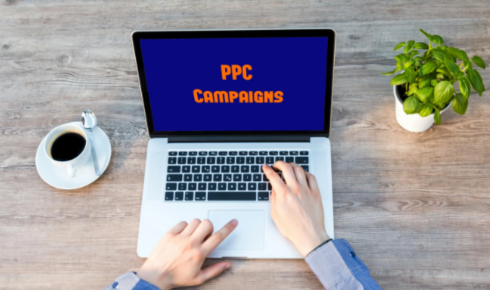Pay-per-click (PPC) advertising can be a powerful tool for businesses aiming to reach a wider online audience, generate quality leads, and boost revenue. However, navigating the intricacies of PPC platforms like Google Ads, Bing Ads, and paid social can be overwhelming. This is where a pay per click consultant comes in. But how do you know when to hire one? Below, we break down key signs that indicate it’s time to bring in an expert and the strategic benefits you can gain by doing so.
Your Campaigns Are Draining Budget Without Results
One of the clearest signs that you need help is when your PPC campaigns are burning through your budget but yielding little return. You might notice high costs-per-click (CPC), low conversion rates, or irrelevant traffic—indicators that your campaigns lack proper targeting, ad relevance, or landing page optimization.
Example: A small eCommerce store running Google Ads for “leather shoes” gets clicks but no sales. Upon inspection, they discover the ad is triggering for unrelated searches like “vegan shoes” or “shoe repair.” This mismatch signals wasted ad spend.
How to Fix It:
- Audit your campaigns to identify keywords with poor performance.
- Use negative keywords to filter irrelevant traffic.
- Split test ad creatives to find what resonates.
- Align landing pages with ad copy to improve relevance and Quality Score.
You’re Not Sure How to Scale Your Success
Perhaps you’ve had some wins with PPC—maybe a few successful campaigns—but you’re unsure how to replicate or expand on them. Scaling requires more than just increasing your budget; it involves refining targeting, testing new ad formats, and optimizing the sales funnel.
Example: A SaaS company sees consistent leads from one campaign but hits a plateau. They don’t know if increasing ad spend will increase ROI or just waste money.
How to Scale:
- Duplicate successful campaigns and test different geographies or demographics.
- A/B test copy and visuals across channels.
- Introduce new campaign types, like remarketing or Lookalike Audiences.
- Track assisted conversions to understand how PPC supports other marketing efforts.
You Lack the Time or Expertise to Manage Campaigns
Running PPC campaigns is a full-time job—optimizing bids, adjusting ad schedules, monitoring performance, testing creatives, and staying on top of platform changes. If you’re a business owner or marketing generalist, managing PPC effectively can eat up valuable time.
Example: An in-house marketer at a mid-sized company is juggling SEO marketing, email marketing, and PPC. Due to time constraints, they haven’t adjusted bids or tested new creatives in months.
What to Do:
- Delegate to an expert or specialized team.
- Use automation tools, but only when properly set up.
- Establish weekly performance reviews to stay on track.
- Ensure conversion tracking is accurate—many wasted campaigns stem from misreported data.
You’re Expanding Into New Markets or Platforms
New markets mean different user behaviors, languages, cultural references, and purchasing patterns. PPC strategies must be localized, and each platform (Google, Meta, LinkedIn) has unique dynamics.
Example: A DTC brand successful in the U.S. wants to enter Canada and the U.K. but doesn’t know how to localize campaigns or comply with regional advertising regulations.
Execution Tips:
- Research local keyword trends and customer behavior.
- Translate and localize ads—not just language, but tone and value propositions.
- Run pilot campaigns to test waters before scaling.
- Use geographic bid adjustments to prioritize top-performing areas.
You Struggle to Interpret Analytics and ROI
If dashboards confuse you and you’re unsure which metrics truly matter, it’s easy to make poor decisions. You might optimize for impressions when conversions matter more, or pause a campaign that’s generating valuable assisted conversions.
Example: A lead-gen website sees a low click-through rate (CTR) and pauses the ad, not realizing it was generating high-value B2B leads via longer sales cycles.
How to Fix:
- Define clear KPIs (e.g., cost-per-acquisition, return on ad spend).
- Segment performance by device, time, and audience to spot hidden trends.
- Set up multi-touch attribution in Google Analytics or a CRM platform.
- Use custom dashboards for easier visualization of true ROI.
You’ve Hit a Wall With Organic Marketing
Even strong SEO and content marketing strategies can take months to bear fruit. If you need faster results—product launches, seasonal promotions, or event-driven campaigns—PPC can bridge the gap.
Example: A retailer sees high rankings for some products but struggles to compete during Black Friday. They want immediate visibility and sales.
Steps to Integrate PPC:
- Run time-limited campaigns for seasonal boosts.
- Use PPC to support SEO gaps by targeting non-ranking keywords.
- Promote high-converting pages with paid ads.
- Combine data from both channels to refine strategies on each side.
You Want to Stay Competitive in a Crowded Market
In saturated industries like eCommerce, SaaS, or professional services, your competitors are likely bidding on your brand keywords, targeting your audience, and using advanced tactics like retargeting and Lookalike Audiences.
Example: A law firm discovers another firm is bidding on their branded keywords, siphoning traffic away from their name.
Defensive Moves:
- Bid on your brand name to protect your SERP presence.
- Launch competitor campaigns with differentiating offers.
- Use remarketing lists to re-engage lost prospects.
- Monitor auction insights to track competitor behavior.
Hiring a PPC consultant is a strategic move when DIY efforts no longer deliver the results you need—or worse, waste budget. Whether you’re struggling to interpret data, scale success, or tap into new opportunities, bringing in expert guidance can make the difference between mediocrity and measurable growth. Don’t wait until the budget is gone—act when the signs are clear, and the potential ROI justifies the investment.




